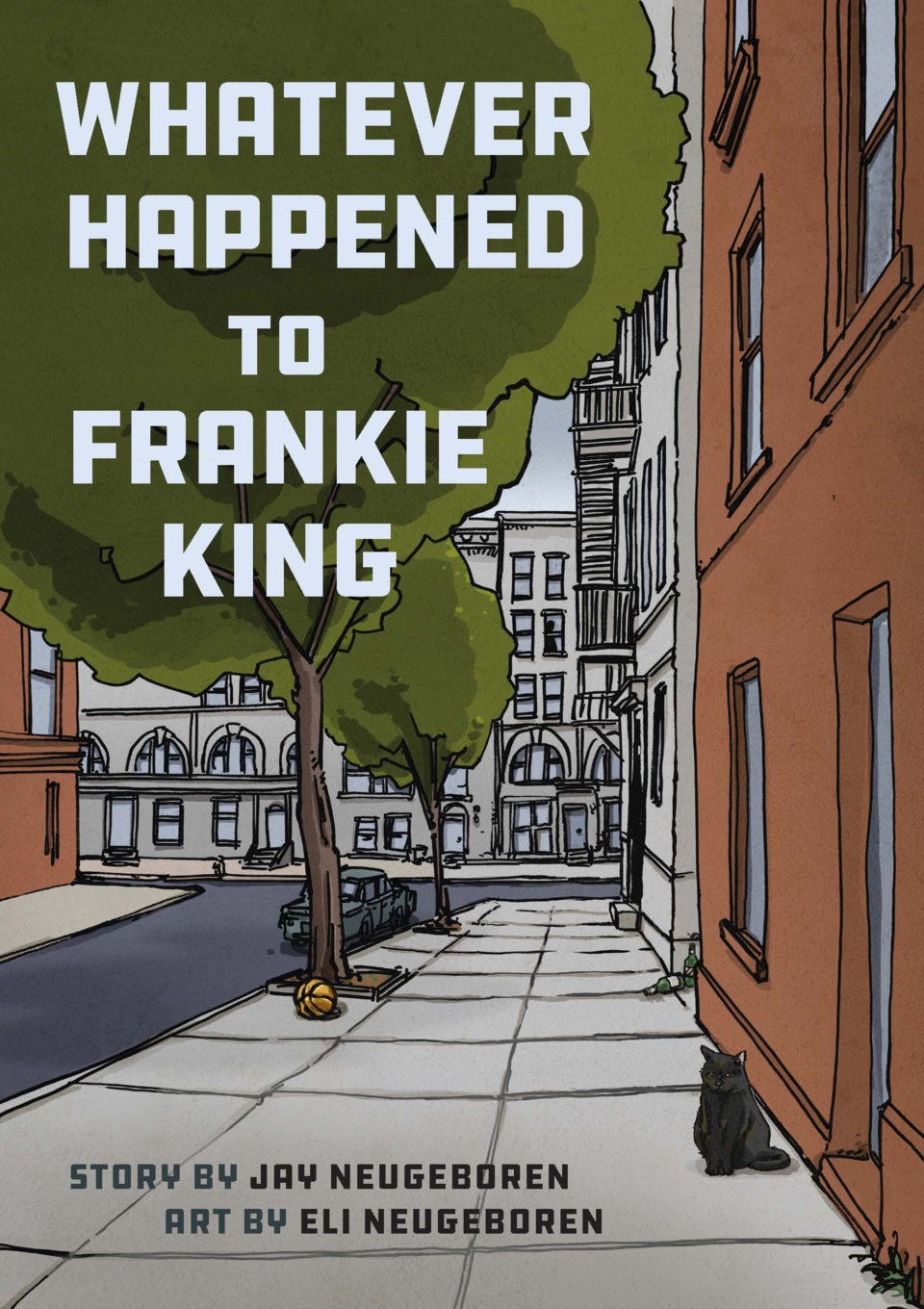What does a rising Brooklyn basketball star do after walking away from the game? For Frankie King, an extraordinarily talented player in the 1950s, the answer was to write 43 books—including a series of “cozy cat mystery” novels penned under a woman’s pseudonym.
Whatever Happened to Frankie King, a new graphic novel by the father-son duo Jay Neugeboren and Eli Neugeboren, follows King’s unexpected journey from promising athlete at James Madison High School to reclusive writer. The book was named one of Publisher’s Weekly’s Top Picks of 2024.
Jay, a writer and author of 22 books who is a former professor at the University of Massachusetts Amherst, crafted the story, while Eli, an artist and professor at New York City College of Technology, City University of New York, brought it to life as the illustrator.
“It had been a goal, a dream, an aspiration of ours for almost a decade to collaborate on something in a graphic novel,” Eli said.
The perfect opportunity arose when Jay, who played basketball in the 1950s in Brooklyn, rediscovered King’s story. “He was the greatest ballplayer I ever saw,” Jay said.

“Basketball has always been a city game," Jay added. "Tennis and golf are not city games for local, middle class kids. But, you can always find a schoolyard and there will always be a basket around."

In 1951, at just 15 years old, King became the youngest player ever to make the first-team All-City roster, with college recruiters banging down his door.
But King, who's Jewish family immigrated from Romania, never played college ball. After committing to the University of North Carolina, he quickly dropped out, leaving the sport just as he was entering his prime. “A lot of it had to do with the expectations put upon Frankie,” Eli said. “It wasn’t that he opposed basketball; he just didn’t want to live up to other people’s expectations.”
For years, basketball fans speculated about what happened to King, with stories circulating about his whereabouts. Some thought he was living on the streets or writing pornography.
However, it turned out that after a stint in the military that led to a brief incarceration, King was actually hiding in plain sight in New York City for most of his life, writing dozens of novels.
None of King’s books had anything to do with basketball. His first seven books, published under his own name, explored varied worlds. For instance, his first novel, Down and Dirty (1978), followed a gay New York City police officer dismissed from the force. The majority of his works, however, were published under the pseudonym Lydia Adamson and featured female protagonists.
One of his most popular series was a collection of “cat mystery” novels centered around Alice Nestleton, an actress who solves crimes. These books sold more than a million copies and were considered some of the most beloved mysteries of the time.
“For Frankie, basketball wasn’t about achieving success but about the freedom to express himself creatively, much like his writing,” Eli said.
While King was prolific, he struggled with addiction and mental health issues. He refused to see any doctors until the very end of his life and often discarded old manuscripts and prizes, erasing the memory of his achievements.
“You often think people are traumatized by failure, but you can also be traumatized by success,” Jay remarked.
Despite this, King carved out his own path until his death in 2015.
“Frankie felt he let people down, but I don’t think he felt he let himself down. He wanted to travel his own road—and he did,” Jay said.
Whatever Happened to Frankie King is available for purchase at bookstores, on the Graphic Mundi website and Amazon.

.png;w=960)


